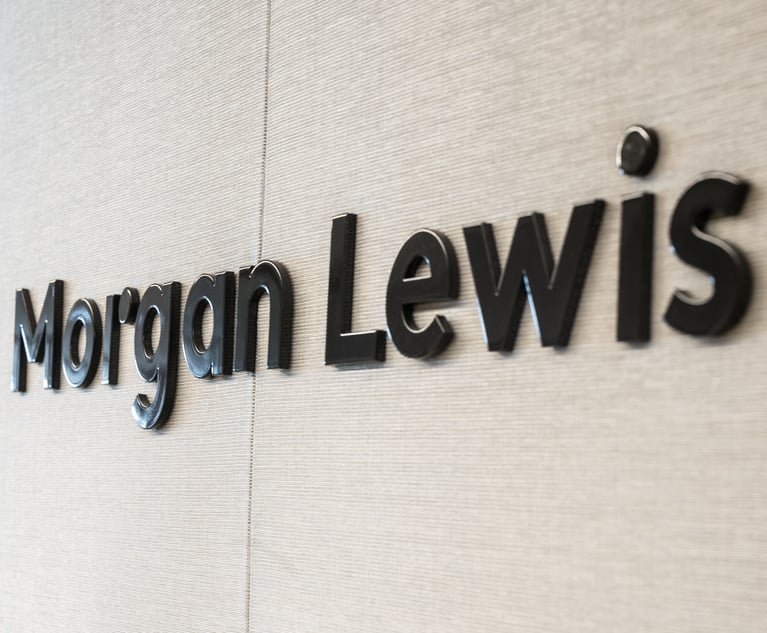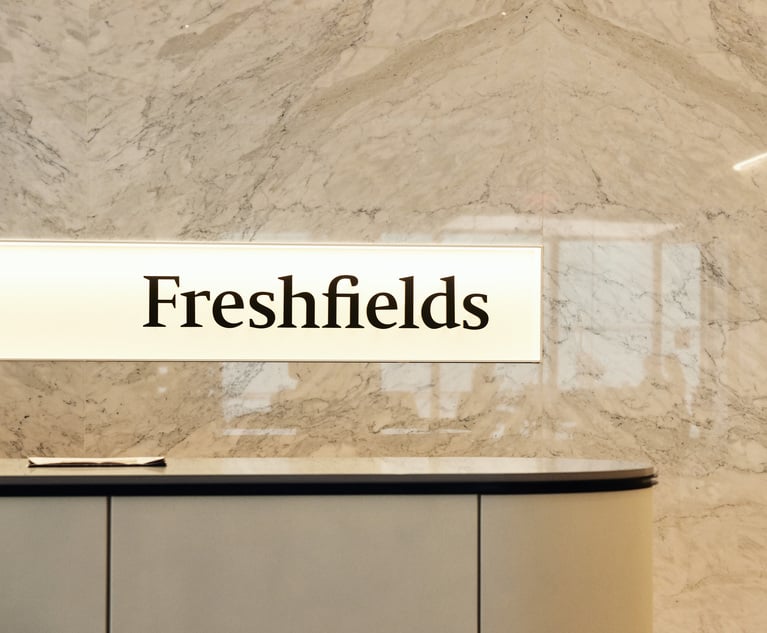Netting the prize
A recurring point of discussion and major concern from the past 12 months or so has been the issue of slashed marketing budgets and how deeply this might impact website operations. While fee earners are being made redundant at all levels and across most practice areas, it seems slightly trivial to talk about the erosion of marketing budgets, yet there are serious consequences to this action.
May 27, 2009 at 08:48 PM
6 minute read
 Clyde & Co's website is a good reflection of the firm's brand, but the legal profession's online offerings are a variable bunch, says James Tuke
Clyde & Co's website is a good reflection of the firm's brand, but the legal profession's online offerings are a variable bunch, says James Tuke
A recurring point of discussion and major concern from the past 12 months or so has been the issue of slashed marketing budgets and how deeply this might impact website operations. While fee earners are being made redundant at all levels and across most practice areas, it seems slightly trivial to talk about the erosion of marketing budgets, yet there are serious consequences to this action.
The annual Intendance Fast Fifty ranks online proficiency in the legal sector. This year's winner is international firm Clyde & Co; a surprising outcome perhaps, but a worthy champion. The firm fought off stiff competition from last year's winner Allen & Overy (A&O) and other hard-hitting online operators such as Addleshaw Goddard and Lovells.
A crucial contributor to Clyde & Co's success was its clever design and positioning, which effectively reflects and promotes the firm's global capacity and industry specialisms. The simplicity of their design theme and its accompanying brand message sets a good example for other firms to follow.
The parameters
While the principal aim of the report is to rate the top 50 law firm websites, it also seeks to capture the year's most salient trends, issues and changes.
One such finding that stood out immediately from our research was the overarching use of search engine optimisation (SEO): the process of finetuning website content and structure to be more search engine-friendly. SEO is seen as a cost-effective way to improve a site's visibility and therefore its value as a business development and marketing tool. This is a typical recession-era measure; while valuable and highly appropriate for the market conditions, it cannot rectify certain fundamental website faults such as outdated design. Budgets may be limited, or even non-existent, but the typical end-user has high expectations. They demand certain standards from the digital medium and especially from the professional services sector. Dated web design reflects poorly on a firm in the same way that an employee's scruffy appearance can tarnish the brand.
Visual appeal
In previous years, a continuing corollary of the Fast Fifty has been that website content is the principal differentiator between firms. While this is still true, many firms have reached a certain standard in their provision of information to stakeholders. The sharing of know-how through news, events, articles, case notes, seminars, partner profiles and other content is now expected, while more innovative means of content delivery like blogs and podcasts are seen as worthy additions to website functionality.
However, as witnessed by the nature of Clyde & Co's win, website design is gaining ground as a key differentiator. While the legal sector is never going to breed the most creative designs, this should not diminish its importance. On the contrary, effective design adds an extra dimension to a site that is far more than just the superficial patina it might seem.
Two of the poorest design performers – Finers Stephens Innocent (FSI) and Denton Wilde Sapte – show how difficult it is to get website presentation right, but in contrasting ways. The latter's site, which scored very highly
for usability, is very minimal in design. Although this approach leads to pleasingly uncluttered pages, the lack of imagery projects a cold, detached feeling to the user, which does not give a good impression of the firm. There is a fine line between minimalist elegance and starkness.
FSI's site is the exact opposite. The homepage is very bright and busy, which is intriguing but slightly confusing. While the firm has good intentions of offering a friendly welcome and promoting the human relationship side of the firm through prominent partner profiles, the idea is poorly executed. The pictures are too big and overbearing for the homepage. Compare Clyde & Co's homepage with FSI's and you can see an immediate difference in image projection. Obviously firms have different identities and strengths to portray, but where Clyde's exudes a clear, calm, professional image – key qualities for a lawyer – FSI's seems muddled and messy.
The use of icons to represent FSI's practice areas is another good concept that is let down by poor design. Their size and colour are too much; by screaming for attention they can have the opposite affect on some users by pushing the eye away.
Evolving excellence
However, the overall standard of the sample for this year's Fast Fifty was much higher than past years. The top 101 firms (by turnover in 2008) were included in a first scoring pass, where previous years only included the 50 fastest growing firms by turnover. This new scoring system has ensured that any firm, regardless of size or growth, has a chance to make the top 50 firms. Notable firms to miss the final cut this year were Linklaters and Pinsent Masons.
While this year's overall winner is not a small firm, the other category winners – Freshfields, A&O and Eversheds – show that large firms with big budgets have made good use of this advantage. Last year, two relatively small firms, Mishcon de Reya and Freeth Cartwright, won the usability and content categories respectively, but in just a year they have slipped down the rankings.
The online world is constantly evolving, and the fall of past winners goes some way to confirm that maintaining website excellence is an arduous task. Keeping up with new technology such as mobile access, satisfying the demands of users for more and more information, tweaking a site's finer details and optimising content for search engines are just some of the measures that need to be addressed on a regular basis. This takes continuous management and eats up many a resource. But in a recession, neglecting your website is counter-productive: the more it can do for your firm, the more valuable it becomes as a service to potential and actual clients.
James Tuke is head of Intendance Research.
This content has been archived. It is available through our partners, LexisNexis® and Bloomberg Law.
To view this content, please continue to their sites.
Not a Lexis Subscriber?
Subscribe Now
Not a Bloomberg Law Subscriber?
Subscribe Now
NOT FOR REPRINT
© 2025 ALM Global, LLC, All Rights Reserved. Request academic re-use from www.copyright.com. All other uses, submit a request to [email protected]. For more information visit Asset & Logo Licensing.
You Might Like
View All
As American Firms Retreat, Will Loyal UK Firms Regain Asia Market Share?

Morgan Lewis to Relocate to Former Goldman Sachs UK Building in £6.6M Annual Deal
1 minute read

India’s Cyril Amarchand Rolls Out AI Strategy As Local Firms Embrace Suite of AI Tools
Trending Stories
- 1Public Notices/Calendars
- 2Wednesday Newspaper
- 3Decision of the Day: Qui Tam Relators Do Not Plausibly Claim Firm Avoided Tax Obligations Through Visa Applications, Circuit Finds
- 4Judicial Ethics Opinion 24-116
- 5Big Law Firms Sheppard Mullin, Morgan Lewis and Baker Botts Add Partners in Houston
Who Got The Work
J. Brugh Lower of Gibbons has entered an appearance for industrial equipment supplier Devco Corporation in a pending trademark infringement lawsuit. The suit, accusing the defendant of selling knock-off Graco products, was filed Dec. 18 in New Jersey District Court by Rivkin Radler on behalf of Graco Inc. and Graco Minnesota. The case, assigned to U.S. District Judge Zahid N. Quraishi, is 3:24-cv-11294, Graco Inc. et al v. Devco Corporation.
Who Got The Work
Rebecca Maller-Stein and Kent A. Yalowitz of Arnold & Porter Kaye Scholer have entered their appearances for Hanaco Venture Capital and its executives, Lior Prosor and David Frankel, in a pending securities lawsuit. The action, filed on Dec. 24 in New York Southern District Court by Zell, Aron & Co. on behalf of Goldeneye Advisors, accuses the defendants of negligently and fraudulently managing the plaintiff's $1 million investment. The case, assigned to U.S. District Judge Vernon S. Broderick, is 1:24-cv-09918, Goldeneye Advisors, LLC v. Hanaco Venture Capital, Ltd. et al.
Who Got The Work
Attorneys from A&O Shearman has stepped in as defense counsel for Toronto-Dominion Bank and other defendants in a pending securities class action. The suit, filed Dec. 11 in New York Southern District Court by Bleichmar Fonti & Auld, accuses the defendants of concealing the bank's 'pervasive' deficiencies in regards to its compliance with the Bank Secrecy Act and the quality of its anti-money laundering controls. The case, assigned to U.S. District Judge Arun Subramanian, is 1:24-cv-09445, Gonzalez v. The Toronto-Dominion Bank et al.
Who Got The Work
Crown Castle International, a Pennsylvania company providing shared communications infrastructure, has turned to Luke D. Wolf of Gordon Rees Scully Mansukhani to fend off a pending breach-of-contract lawsuit. The court action, filed Nov. 25 in Michigan Eastern District Court by Hooper Hathaway PC on behalf of The Town Residences LLC, accuses Crown Castle of failing to transfer approximately $30,000 in utility payments from T-Mobile in breach of a roof-top lease and assignment agreement. The case, assigned to U.S. District Judge Susan K. Declercq, is 2:24-cv-13131, The Town Residences LLC v. T-Mobile US, Inc. et al.
Who Got The Work
Wilfred P. Coronato and Daniel M. Schwartz of McCarter & English have stepped in as defense counsel to Electrolux Home Products Inc. in a pending product liability lawsuit. The court action, filed Nov. 26 in New York Eastern District Court by Poulos Lopiccolo PC and Nagel Rice LLP on behalf of David Stern, alleges that the defendant's refrigerators’ drawers and shelving repeatedly break and fall apart within months after purchase. The case, assigned to U.S. District Judge Joan M. Azrack, is 2:24-cv-08204, Stern v. Electrolux Home Products, Inc.
Featured Firms
Law Offices of Gary Martin Hays & Associates, P.C.
(470) 294-1674
Law Offices of Mark E. Salomone
(857) 444-6468
Smith & Hassler
(713) 739-1250








